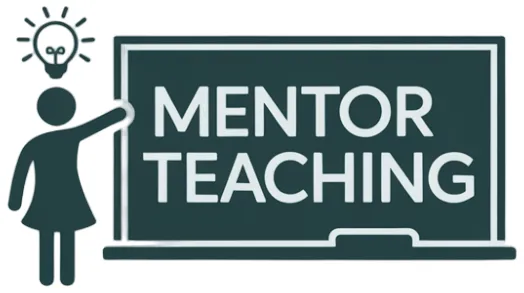Introduction
Welcome to our guide on How to Write Effective Lesson Plans. If you’re a teacher or an educator, you know that a well-thought-out lesson plan is not just a blueprint for your day but a critical tool for successful teaching and learning.
In this article, we’re going to delve into the art and science of creating lesson plans that not only meet educational standards but also engage and inspire your students. Whether you’re new to teaching or a seasoned educator looking for fresh ideas, this guide aims to equip you with practical strategies and insights to enhance your lesson planning process.
We understand that writing an effective lesson plan can seem daunting. It’s not just about covering the curriculum; it’s about crafting an educational journey that’s clear, structured, and adaptable to the diverse needs of your students. That’s why we’ve broken down the process into manageable steps, providing you with clear guidance and tips to make your lesson plans as effective as they can be.
So, whether you’re planning a single lesson or a series of lessons, let’s explore how you can create plans that are engaging, meaningful, and impactful for your students.
Understanding the Basics
Before diving into the nitty-gritty of lesson planning, it’s important to understand what a lesson plan is and why it’s so crucial in the teaching process.
Definition of a Lesson Plan
A lesson plan is essentially a roadmap for a class session. It outlines what the teacher will teach and how they will teach it. Think of it as a detailed guide that includes the objectives of the lesson, the methods for teaching, the resources needed, and how to assess student understanding.
Key Components of a Lesson Plan
Every effective lesson plan should include certain essential elements. Let’s break these down:
- Learning Objectives: What do you want your students to learn or accomplish by the end of the lesson? These should be clear, achievable, and measurable.
- Materials and Resources: List all the materials you and your students will need during the lesson. This could include textbooks, handouts, technology tools, etc.
- Instructional Procedures: This is the step-by-step plan of how you will present the lesson. Will you start with a discussion, follow with a video, and then move to a group activity? This section maps out the flow of your lesson.
- Assessment Methods: How will you ensure your students understand the material? This could be through questions, quizzes, group projects, or other assessment tools.
- Timing and Pacing: Estimate how much time each part of your lesson will take. This helps ensure that you cover all the material without rushing or dragging.
Understanding these components is the first step in crafting a lesson plan that’s both effective and engaging. In the following sections, we’ll explore each of these elements in more detail, providing you with practical tips and examples.
Setting Clear Objectives
One of the most crucial steps in creating a lesson plan is defining clear and achievable learning objectives. These objectives are the cornerstone of your lesson, guiding your teaching and students’ learning.
Importance of Learning Objectives
- Direction and Focus: Clear objectives provide a roadmap for you and your students. They help keep the lesson focused and on track.
- Measurable Outcomes: Well-defined objectives allow you to measure whether your students have achieved the desired learning outcomes.
Creating SMART Objectives
To ensure your objectives are effective, make them SMART:
- Specific: Clearly define what you want your students to learn.
- Measurable: Make sure you can assess whether the objective has been met.
- Achievable: Set attainable objectives for your students within the lesson time frame.
- Relevant: Align objectives with the overall curriculum and your student’s needs.
- Time-Bound: Set a clear timeframe within which the objectives should be achieved.
Aligning Objectives with Curriculum Standards
- It’s crucial to align your lesson objectives with the broader curriculum standards. This ensures your teaching meets the required educational benchmarks and contributes to your student’s overall learning progression.
Examples of Well-Defined Objectives
Here are some examples of well-defined objectives:
- By the end of the lesson, students can solve basic algebraic equations with 80% accuracy.
- Students will demonstrate an understanding of the water cycle by creating a diagram and presenting it to the class.
Setting clear SMART objectives lays a strong foundation for your lesson. This not only helps in achieving the desired educational outcomes but also in making the learning process more efficient and focused.
Planning the Lesson Structure
Once you have clear objectives, the next step is to plan the structure of your lesson. This involves deciding how you will introduce the topic, engage your students throughout the lesson, and conclude in a way that reinforces their learning.
Introduction to the Lesson
- Engaging Start: Begin with something that grabs your students’ attention. This could be a question, a surprising fact, a short video, or an interactive activity.
- Link to Previous Knowledge: Help students connect by relating the new lesson to something they already know or have previously learned.
- Outline the Lesson: Give students a roadmap of what they will learn and are expected to do. This sets clear expectations.
Body of the Lesson
- Teaching Methods: Choose the right mix of teaching methods to deliver the content. This might include lectures, discussions, hands-on activities, group work, or multimedia presentations.
- Active Participation: Encourage students to participate actively. This could be through questions, collaborative work, or hands-on tasks.
- Check for Understanding: Regularly pause to ask questions and gauge students’ understanding.
Conclusion of the Lesson
- Summarize Key Points: Reinforce the main ideas of the lesson. This helps in solidifying the students’ understanding.
- Connect to Future Learning: Explain how this lesson ties into upcoming topics or lessons.
- Provide Closure: End with a clear conclusion, whether it’s a summary, a final question, or a brief reflective activity.
Structuring your lesson effectively is crucial for maintaining student engagement and meeting learning objectives. A well-structured lesson flows smoothly, keeps students interested, and maximizes learning.
Incorporating Diverse Teaching Methods
A key to effective lesson planning is using various teaching methods to cater to different learning styles and keep students engaged. Let’s explore how you can diversify your teaching strategies.
Differentiated Instruction
- Understanding Different Learning Styles: Recognize that students have different learning preferences – some may be visual learners, while others may prefer hands-on activities.
- Adapting Teaching Methods: Use a mix of lectures, visual aids, group discussions, and practical activities to cater to these diverse learning styles.
Integrating Technology
- Enhancing Learning with Digital Tools: Incorporate educational technology like interactive whiteboards, educational software, and online resources to make learning more engaging and interactive.
- Promoting Digital Literacy: Teach students to use technology responsibly and effectively as part of their learning process.
Active Learning
- Student-Centered Activities: Encourage students to actively participate in their learning through problem-solving tasks, project-based learning, and collaborative work.
- Engagement and Interaction: Create opportunities for students to discuss, question, and interact with the content, fostering more profound understanding and engagement.
By integrating various teaching methods, you can create a more dynamic and inclusive learning environment. This keeps students interested and engaged and caters to their individual learning needs, leading to a more effective and enriching educational experience.
Assessment and Feedback
Assessment and feedback are integral parts of the learning process. They help you gauge student understanding and progress and provide valuable insights for future instruction. Here’s how to effectively incorporate them into your lesson plans.
Formative vs. Summative Assessment
- Formative Assessment: This is ongoing and takes place during the lesson. It includes activities like quizzes, discussions, and observations to monitor student learning and provide immediate feedback.
- Summative Assessment: These are usually at the end of a unit or term, like final exams or projects, to evaluate overall learning and mastery of the content.
Creating Effective Assessment Tools
- Align with Objectives: Ensure your assessment methods align with your learning objectives. If your objective is to enhance problem-solving skills, your assessment should measure that ability.
- Variety of Methods: Use different types of assessments (written, oral, practical) to cater to various learning styles and abilities.
Providing Constructive Feedback
- Timely and Specific: Provide timely and specific feedback on what the student has done well and what can be improved.
- Encouraging Growth: Frame feedback to encourage growth and learning rather than just pointing out mistakes.
Practical assessment and feedback measure student learning and motivate and guide students toward improvement. They are crucial for both teachers and students to understand the effectiveness of the teaching and learning process.
Flexibility and Adaptation
An essential aspect of effective lesson planning is being flexible and adapting to varying classroom dynamics and unexpected situations. Here’s how to build flexibility into your lesson plans while staying focused on your objectives.
Adapting to Different Class Dynamics
- Understanding Your Students: Be aware of the unique dynamics of your class. Different groups of students have different needs and respond differently to teaching methods.
- Tailoring Your Approach: Be prepared to adjust your teaching methods based on your students’ engagement and understanding level.
Handling Unexpected Situations
- Plan B: Always have a backup plan. If a planned activity isn’t working as expected, be ready to switch gears.
- Time Management: Be flexible with your timing. Some topics might require more time than initially planned, while others may be covered more quickly.
Maintaining Focus on Objectives
- Balancing Flexibility and Goals: While being adaptable, always keep your learning objectives in sight. Ensure that any adjustments or deviations still lead towards achieving the set goals.
- Reflective Teaching: Regularly reflect on your teaching practice. Consider what worked well and what could be improved for future lessons.
Flexibility in lesson planning means being responsive to the needs of your students and the realities of the classroom while maintaining a clear path toward your educational objectives. It’s about striking the right balance between structure and adaptability.
Reflection and Improvement
Reflecting on your teaching practices and constantly seeking improvement are key to becoming an educator. This final section discusses using reflection effectively to enhance your lesson planning.
The Role of Reflection in Lesson Planning
- Continuous Learning: Reflecting on each lesson helps you identify what worked and what didn’t, facilitating continuous professional growth.
- Student Feedback: Consider getting feedback from your students. They can provide valuable insights into what they found engaging or challenging.
Strategies for Self-Evaluation
- Journaling: Keep a teaching journal to note observations, successes, and areas for improvement after each lesson.
- Peer Collaboration: Discussing your lesson plans and experiences with colleagues can provide new perspectives and ideas.
Continuous Improvement
- Experimentation: Don’t be afraid to try new approaches or activities. Experimentation can lead to discovering more effective teaching strategies.
- Professional Development: Engage in professional development opportunities to stay updated with the latest educational practices and research.
Reflecting on and improving your lesson planning is an ongoing process. It’s about being open to learning, adapting, and striving for better ways to engage and educate your students.
Conclusion
Congratulations on reaching the end of our guide on How to Write Effective Lesson Plans! We’ve covered a lot of ground, from understanding the basics and setting clear objectives to incorporating diverse teaching methods and embracing flexibility and adaptation in your plans.
Recap of Key Points
- Set Clear Objectives: Start with clear, achievable goals.
- Engaging Lesson Structure: Plan your lessons to be engaging, informative, and interactive.
- Diverse Teaching Methods: Use various methods to cater to different learning styles.
- Assessment and Feedback: Regularly assess student understanding and provide constructive feedback.
- Be Flexible: Adapt to the needs of your students and unexpected classroom situations.
- Reflect and Improve: Continuously reflect on your practices and strive for improvement.
Final Thoughts
Remember, effective lesson planning is a skill that develops over time. It involves understanding your students, being creative in your teaching methods, and reflecting in your practice. Don’t be afraid to experiment and learn from each experience. Every lesson is an opportunity to grow as an educator and positively impact your students’ learning journey.
We hope this guide has provided valuable insights and practical tips to enhance your lesson planning skills. Here’s to creating engaging, effective, and enjoyable learning experiences for your students!




